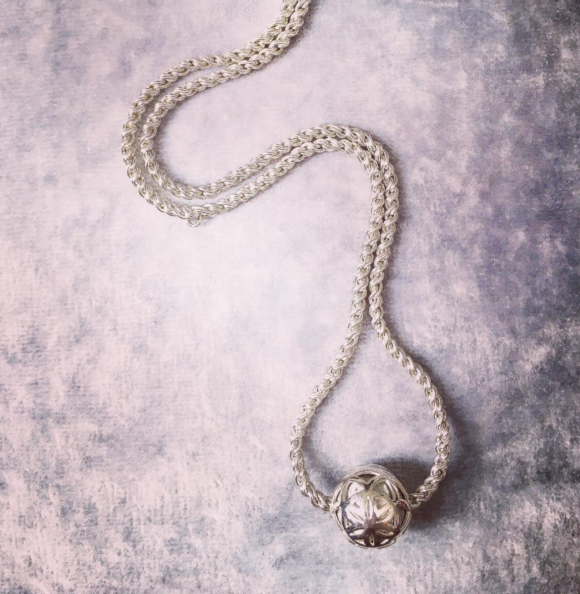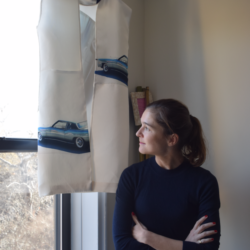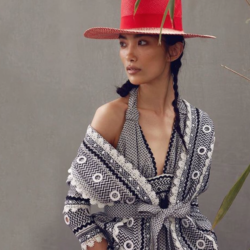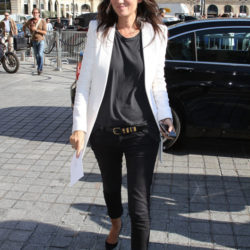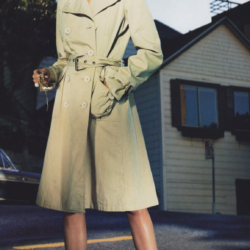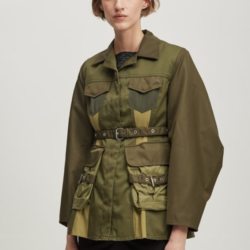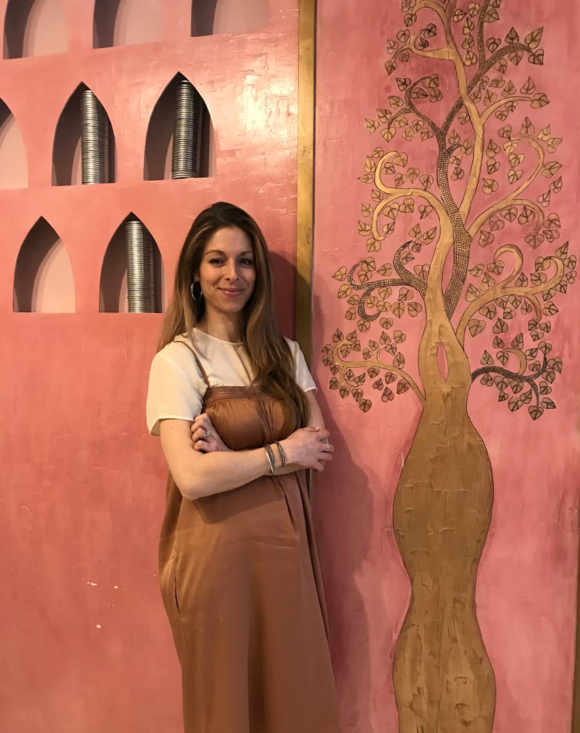
Recently I had the pleasure to speak with Elizabeth Suda, the founder of the jewelry company Article 22, which creates jewelry out of Vietnam era bombs that still litter Laos and imperil its people. Elizabeth’s desire to integrate traditional crafts into the mainstream fashion supply stream took her on a remarkable journey. Here’s her story.
Jolain Muller How did this journey begin?
Elizabeth Suda I studied history and art history so my degree before my first job at Coach was totally liberal arts, not business or fashion related. At Coach I learned so much, I was merchandising assistant from 2005 to 2007. I worked with the designers, the product development team that worked with the factories overseas, the quality assurance team that would check the product before it went to market, and the marketing team that tracked the business on a weekly basis to understand what was selling.
JM Good training for this.
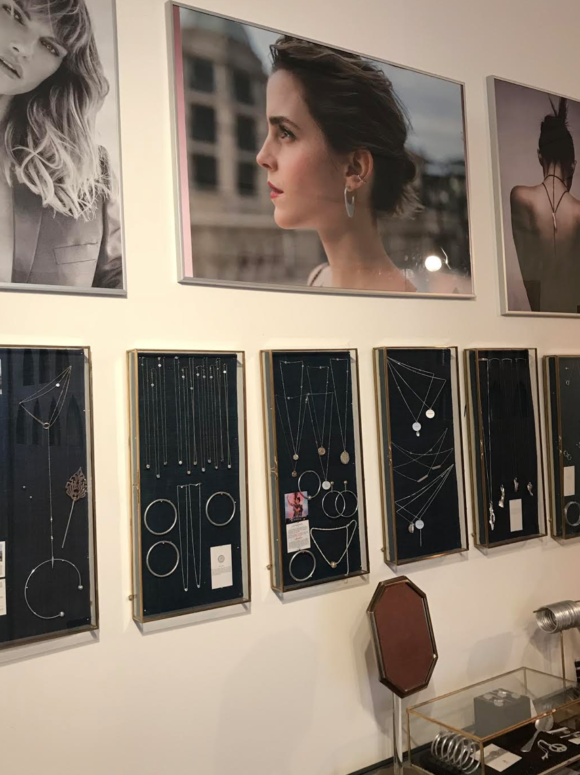
First Trip To Laos 2008
ES It was amazing, a mini MBA. One summer, people at my level were tasked with leading a project that would be presented to the senior vice president of the merchandising department. The idea was to think about what could influence Coach’s future collections. I suggested to my group that we choose the environment and that’s what got me started on this whole sustainability kick and into this rabbit hole on line. This led me to apply for a Fulbright Scholarship. Initially I thought I’d go to India but I didn’t get the Fulbright so I ended up in Laos. It was the best failure ever.
JM Did you know that you wanted to start some sort of venture of your own?
ES No, not at all, I thought I would go and understand what traditional craftspeople were doing today and what they could teach us in more mainstream fashion. I thought I’d come back to the US and get my masters or work for a fashion company and plug in the knowledge that I gained and connect indigenous artists to the global fashion market, be a bridge that worked with a larger company. I got a consulting job while I was in Laos to do a textile research project on the supply chain in four rural villages. There I discovered what ended up becoming Article 22. So it was not intentional at all.
JM How much time did you spend there your first trip?
ES Six months
JM And you self financed the whole thing?
ES Yes, it was a little hairy, not so much the money thing, it was more not having the institutional support or the network so that was intimidating. Actually I ended up in a very lucky situation, and I always say luck is when opportunity meets preparation. I was prepared but I didn’t have a plan. I knew I was motivated enough to self finance it and I did a bunch of research but I didn’t have an organization or a point of contact that I had even connected with prior. Getting on the plane I had no concrete plan, just show up and start knocking on doors and I did that.
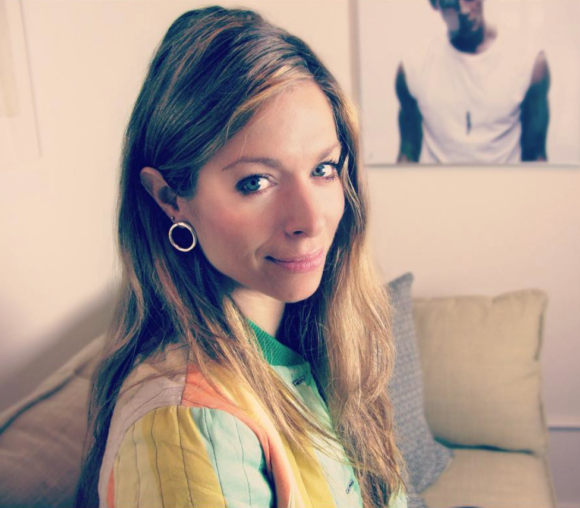
JM What about the language barrier?
ES I had a phrase book, you start with hello and thank you and people are really impressed. Eventually you realize you don’t need language to communicate that much. I know that sounds crazy but if you can build trust and just humiliate yourself a little bit, people will sense that you’re able to be honest and vulnerable and you can actually get quite a bit done. Now that we have a business we have a country manager in Laos and at the time I had intermediaries too but I got lucky, the first door I knocked on was a woman who had a textile business that was focused on employing women, hand looming and natural dying.
JM So you struck gold right away.
ES Completely, she was also the president of the Laos Handicrafts Association. So I knock on her door. She’s not there; I’m offered tea and wait. I spent so much time in her studio and I’m looking through the curtain at the weavers and I don’t want to leave, it was amazing. By the time I am about to leave she comes home. We started talking and she did speak a little bit of English and French, she studied in France. She was a unique woman because she had gotten out and wasn’t touched by the war herself because she was studying. She was a true pioneer and my inspiration in Laos. My humble role was to take some photos, write some text and help her daughter learn a little bit of English. She and her daughter found me an apartment and lent me a bike and helmet and had me for lunch pretty much every day. In return I got so much more, this whole experience was priceless.
JM I would imagine there’s not that many westerners or Americans there.
ES Because the capital, Vientiane is such a small city you actually feel the presence of ex-pats. There are people who work for the World Bank and the UN. Laos I think only just upgraded from the status of being one of the world’s most impoverished countries and so a lot of progress has been made.
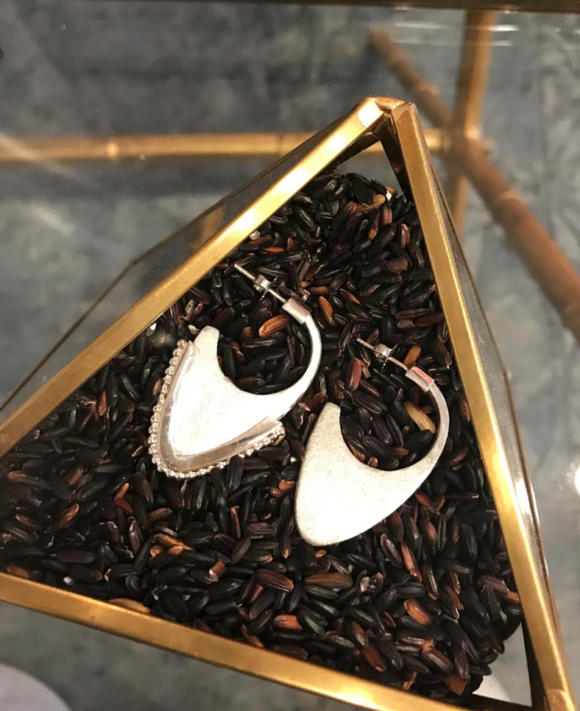
JM I was astounded to read during the Vietnam War the Americans dropped 250 million bombs, of which 80 million did not detonate. That seems like an absurd amount.
ES I think what’s so shocking about that too is my life in Vientiane had really no connection to what had happened except for the war museum, which I lived across the street from and I did visit in the early days. It wasn’t until I went up to the north, that I saw the affects of the secret war. The type of bomb that was so prevalent during the secret war was a cluster bomb. It would release in one huge case up to 300 small bombs, the size of a human fist. That bomb would open mid air and all these little bombs would scatter, so there are both large bombs and a very high quantity of cluster munitions that have a 30% failure to detonate rate. That’s why today there are 80 million unexploded bombs and I should say that only 1% of those 80 million have been cleared.
JM So for the people who live in these areas it’s as a way of life that they don’t walk here or they only walk on a path.
ES Yes, when they know that’s what they do, they’re very deliberate on where they walk and a lot of the times they just have to be very careful. They know that they don’t know where the unexploded ordinances are. So they farm their fields year after year knowing that it’s there. The other problem is when children find them because they look like bocce balls they’ll pick them up thinking that they’re a toy and then they’ll throw it and play catch and then it will explode.
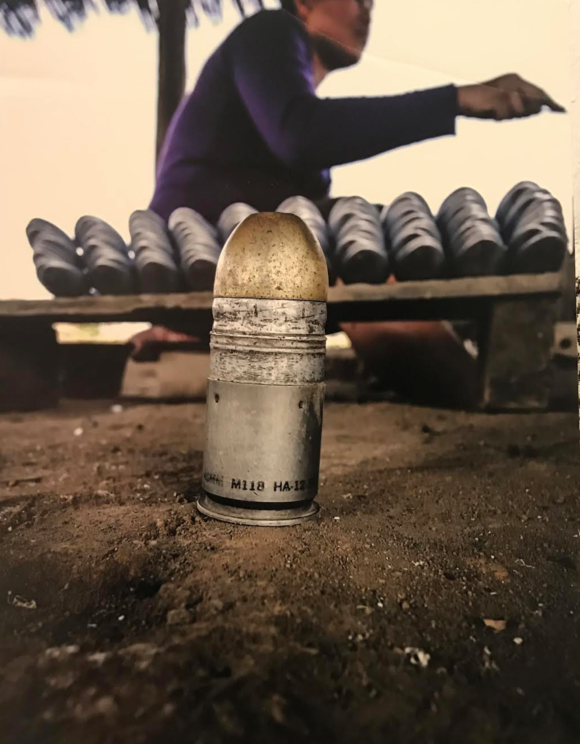
To The Villages of the North
JM So in you come, how do these things connect? You’re in Vientiane, you’re seeing a lot, you’re learning a lot and then you eventually make it up to the north.
ES I was there with a Swiss NGO called Helvetas. They just brought hydropower to four villages and wanted to help them use the newfound energy in a productive manner. We were looking at what skills already existed in the four villages and weaving was one of them. Now women could weave an extra hour because they had light. My job was to understand the textile supply chain and then make recommendation on how those items could then fit into the local tourist market.
In each of the villages I said what else you do you make, just thinking about how to integrate different crafts from different families that may have a particular expertise. One of the villages had this capacity to make soupspoons. This women, who was a weaver, led me over to a kiln in a beautiful garden, a man was pouring this molten metal into a wooden ash mold. When he opened it up there was this glowing, beautiful soupspoon. I was like; I just ate off of that this morning when I ate my noodle soup for breakfast. So the woman grabs my hand and led me to a shed and in the shed are scraps of metal and the one she picked up was clearly not in her language but in English and it said rocket mortar on it. It was this giant piece of shrapnel. They had been melting the shrapnel of a jet plane that had gone down in their village and other aluminum scraps into spoons since the 1970’s.
JM You must remember that day vividly.
ES As cliché as it sounds it was an ah ha moment. I was shocked, having studied history, to learn about the legacy of the Vietnam War and Laos and to see people that were living with that legacy on a day-to-day basis. They’re subsistence farmers, outside of spoon making and now jewelry making, they would eat what they farmed. There was no disposable income from selling it at market. I thought how can we tell this story? It’s going to be hard to sell soupspoons at home so lets make a bracelet and wear the story and buy back the bombs. The idea was each piece of jewelry would help clear some of the unexploded ordinances from the land, raise awareness and then of course build a trade not aid supply chain that celebrates the artisans that are the whole reason that the bracelet exists. They figured out a way of repurposing this devastation into something useful, it’s their method. Article 22 is just providing the design and story telling component that will get it out to the world.
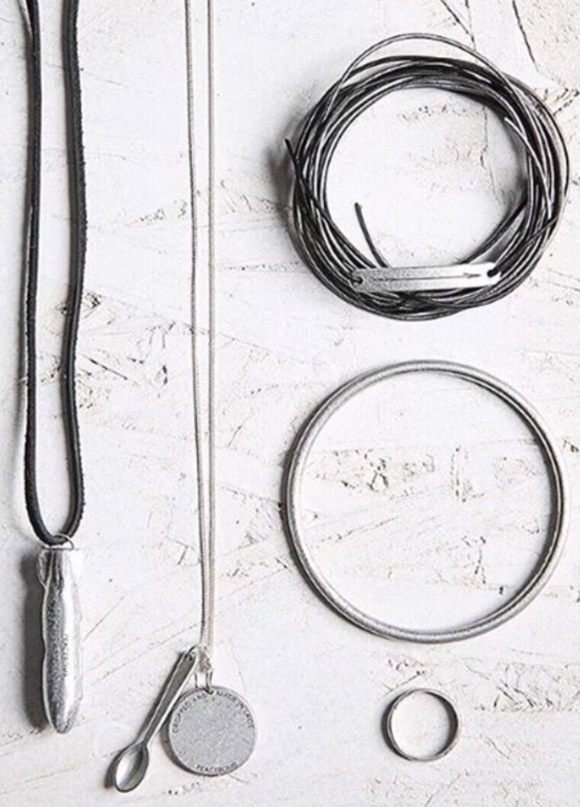
Article 22 Is Born
JM That’s an incredible story. So was it on that day the whole thing was born?
ES Yeah, I just knew. I couldn’t promise them that it would be successful. It took a year or 10 months to get the first bracelet sample. It took me a little time to figure out what I wanted to try to do and by this time I was back in the US.
JM Did you know anything about jewelry making?
ES No, I had no idea, but I thought if they can make spoons, they can make a bracelet, and if they can make a bracelet I’ll try to sell it. At that time my partner was the Swiss NGO, Helvetas. I developed the peace-bomb jewelry collection with them and my intermediary said to me a lot of foreigners come in here with not that much follow up so they really were not that enthused about (making) the bracelets, they were like why should we waste our time? I said okay, I can respect that but at least I will buy the first 500 and I can show you, this is one of the first batch, just as a reference point, and it’s beautiful in its own way but you can compare that to this which is consistent and smooth.
JM Oh yeah, big difference, so did you get 500 of these?
ES Yup, the early ones are mostly like that but they sold anyway.
JM Because the story is so amazing. I’m looking at your earrings and they are highly polished, have they become better and more sophisticated?
ES Well a few years later we brought machines to the village. In some cases I’ll show them a picture of something and they’ll figure it out on their own. I think over the last two years we brought something like five or six machines and molds and more professional jewelry making equipment.
JM And now your line is so expanded, you have all kinds of things on it.
ES Yes exactly, so once we got them to feel confident that the jewelry was working they had the incentive to expand.
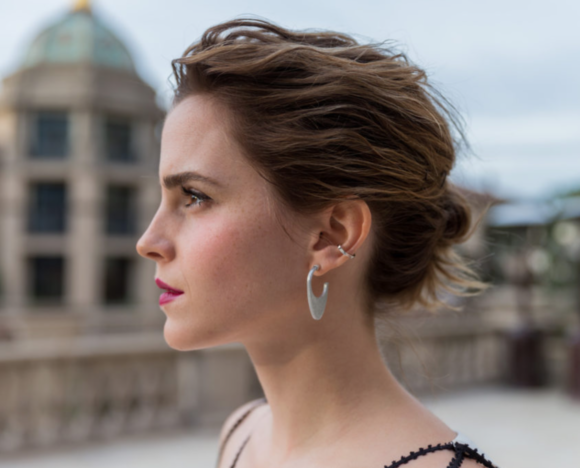
Make it Happen
JM How did you sell the collection?
ES I built my own website. At this point I came back to the US, it was a project, I was operating as a sole proprietor and I was getting incredible emails from Vietnam veterans and Laotian Americans who really encouraged me to transition it from a project to a business.
JM How did people find you?
ES Because it was such an unknown story I had a few press pieces that kind of snowballed.
JM And are your artisans happy? I remember you said they make five times what they would normally make.
ES Yes on an hourly basis, but they work part time, they don’t need to work for us everyday at all. They can make a lot of pieces in one day, they set the prices, they set their hours. I’ll say ok I need this, I’m rushed I’ll pay you x percent more. Occasionally that happens when we run out of something that we just didn’t expect to. Like the Emma earrings that Emma Watson wore;(see the story here) we didn’t even have stock when she wore them, they were so new. But for the most part we give them enough lead-time and we do have to be cognizant of the rainy season and also the harvest, they have other responsibilities.
JM It’s such a great thing because you enriched their lives without coming in and disrupting the whole rhythm of the village, you’ve just enriched it, which is so amazing. Do you still go there?
ES The last 12 months I went three times but now, 2018, I will not make it because of being pregnant there is a very small risk of Zika, but I just feel it’s really cool for me to just lay low here. But as soon as she gets all of her vaccinations, my future child, I will strap her on my back and we’re going to the village.
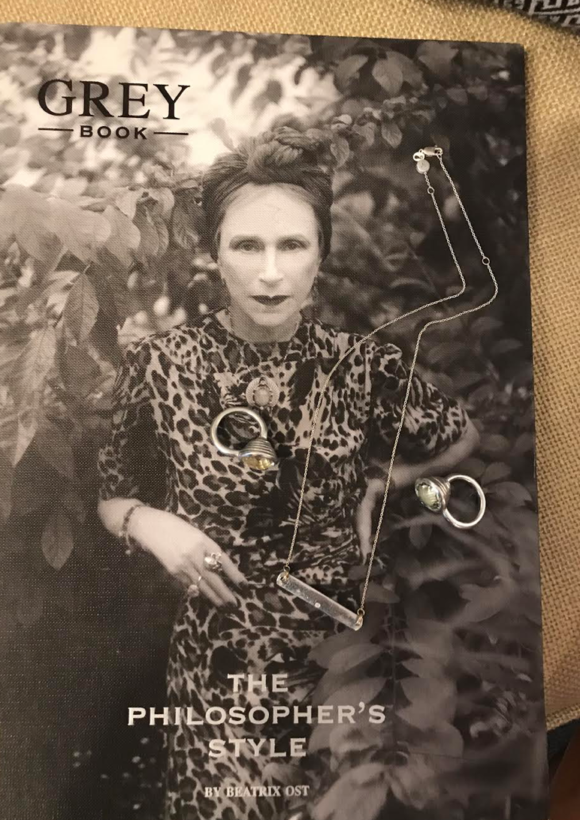
Article 22 Today
JM Who else is involved with you in the business?
ES Camille runs our wholesale and business partnerships and Kelly is not on the website but she should be there, she joined us after selling the product for over a year. Gael is my husband and helps on a part time basis with legal and finances. Manivone (Laos country manager) came on board and she is just an amazing person, I call her the ambassador. And we have 3 to 4 interns every six months who are indispensible at this point.
JM You’ve come a long way since your first trip to Laos in 2008.
ES From the moment we had our bracelet people were like can I put a special message on it? And can I put a special message on my bracelet became do you make wedding bands? That’s when we introduced diamonds, because we thought, well our mantra is love is the bomb. There’s no better symbol than the symbol of love, the diamond, to integrate with our metal and our mantra. Then people wanted to personalize and custom engrave the rings. I feel the fashion industry is going to become more fragmented in a really positive way that is responding to the demands of more individuality. That’s really an amazing thing for small batch producers and artisans and smaller brands. You can really connect with your customer the way we connect with our artisans over Facebook, we connect the two through our page to tell the stories. It is the moment that we’re at technologically, facilitating the push towards individualization.
JM Very well put.
ES From the beginning we were selling in 20 countries and now its up to 40. Australia is 12% of our business. And it’s amazing that we’re a global brand because of the Internet. I’m certainly not the only brand our size; it’s about a real conversation. One thing that’s been very important to Article 22 from the beginning is having a range of price points. Essentially one bracelet at 50 dollars will help clear 3 square meters of unexploded bombs from the land. One that is 150 dollars is going to clear, you know, 12 lets say. As the price increases the impact to help clear the land increases. Artisans get paid more because its more labor to finish the pieces with either precious materials or high polishing. It’s a model that I think works on an impact level and also works from the consumer perspective.
JM So much good on many levels. For my final question, what do you think is the most important human trait?
ES I would say vulnerability and being honest about that vulnerability. I think that’s really how you truly connect with people and what I was saying before about not speaking Laos. Just to be able to be honest and show people your true self. I think when you’re vulnerable that creates that baseline of trust, words aren’t needed to express, you feel it.
